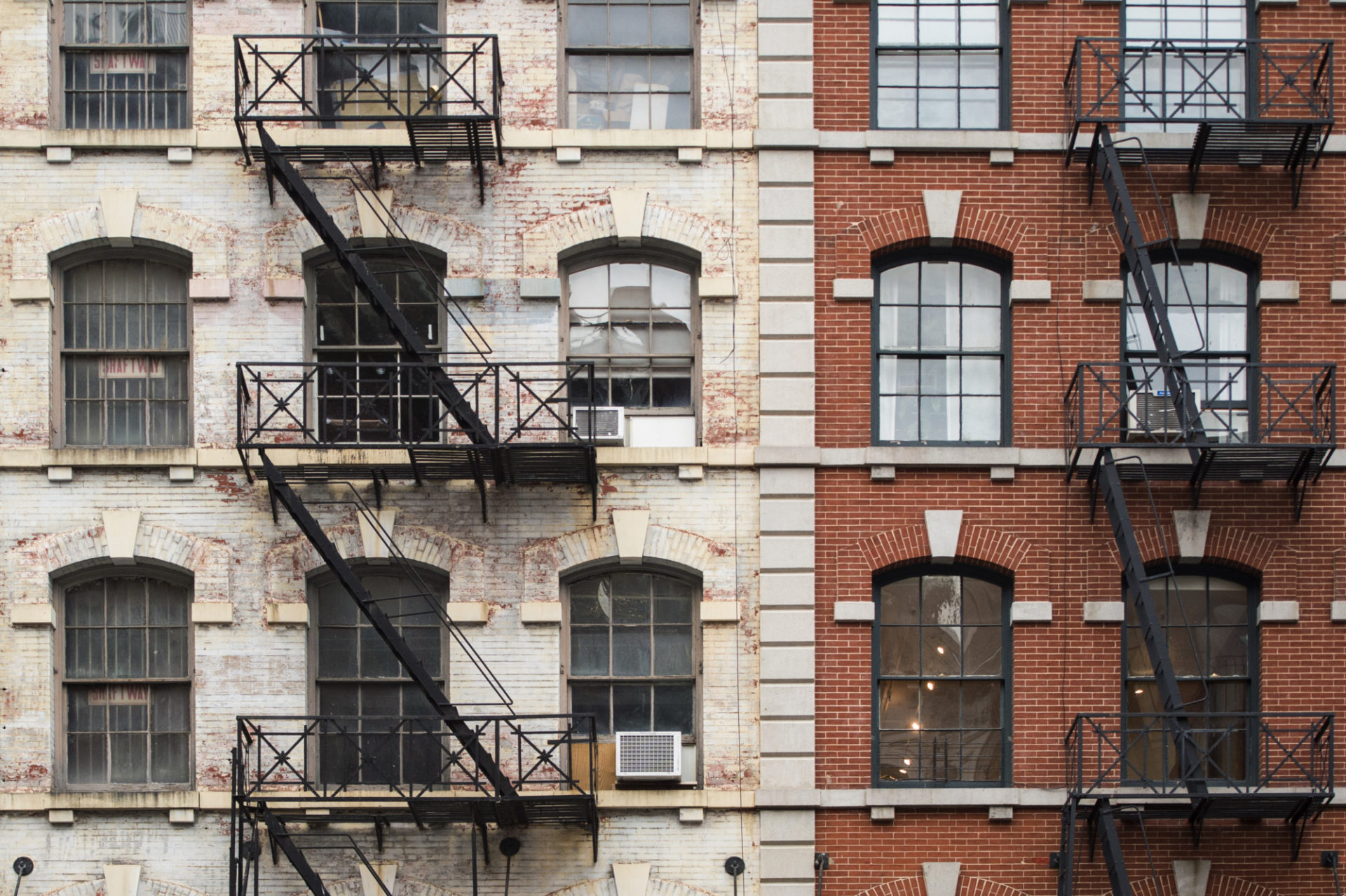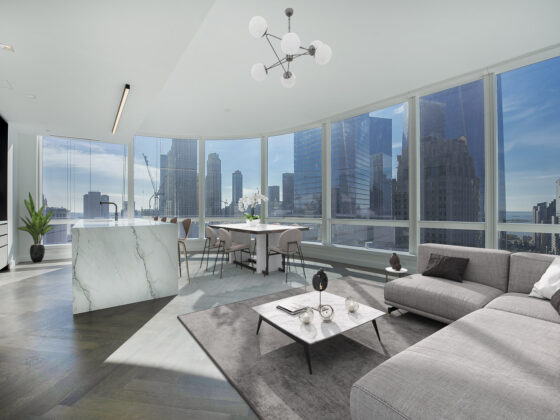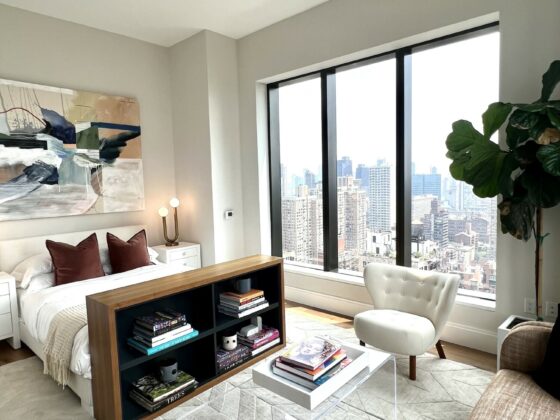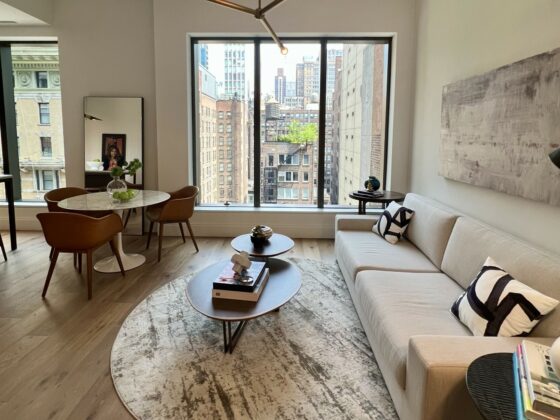Table of Contents Show
With rents in New York City so high (and going higher every year), many people desperately need affordable housing. In New York, there are two types of renters, those who live in rent-regulated apartments and those who don’t. Most of the time, the latter group badly wants to be part of the first, for a good reason. Finding a rent-stabilized apartment will mean getting a series of guarantees and protections that regular market-rate renters don’t have.
Primarily the safety net of relatively predictable rent increases and automatic lease renewals. But even with about one million rent-stabilized apartments in the city (comprising roughly 44% of the rental stock), finding one of these apartments isn’t so easy. Our complete guide will give you the best chance of finding and holding onto one. We take you through all the ins and outs of rent-stabilized apartments in New York City.
Rent-Stabilized vs. Rent-Controlled ApartmentsRent-Stabilized vs. Rent-Controlled Apartments
You’ll often encounter these two terms when hunting for an NYC apartment on the cheap. It’s essential to establish that these are not the same things. Both come under the broader term of rent regulations. New York, starting in 1943, was the first state to adopt these laws to ensure affordable housing. Since then, rent regulation laws have changed substantially.
The oldest of these, still in effect, is rent-controlled apartments. Unfortunately, you can pretty much forget about scoring one of these. To qualify; as a rent-controlled apartment. The unit must be in a building built before 1947. In addition, it must have been occupied by the same family since 1971. Such units can only be passed down through the family; the receiving heir has to have lived in the apartment for at least two years before the death of the previous leaseholder.
Chance of landing a rent-stabilized apartmentChance of landing a rent-stabilized apartment
The benefits with rent-controlled apartments include a maximum amount by which a lease the rent, the right to a lease benefits e renewal each year and protection against arbitrary eviction. A newcomer to the NYC rental market stands a much better chance of landing a rent-stabilized apartment, but these still come with restrictions. To qualify; as a rent-stabilized apartment, a unit must be in a building that:
- It was built before 1974
- It has more than six units
- It is not a condo or co-op building
- It has not been previously deregulated through vacancy decontrol
Also, the unit itself cannot be priced (presently) at over $2,700. If the rate goes above this, then the apartment can be deregulated. Each year the rent increases are set by the Rent Guidelines Board. At present, the rent increase for lease renewals is:
- 1-year lease: 1.5%
- 2-year lease: 2.5%
This is set to expire on September 30th, 2019, meaning that if you sign a lease before, these increases will apply to you. The RGB will take these increases and apply them to you; another vote will be in June this year, 2019-2020. You can check their website to keep up-to-date with the latest announcements and read more into the intricacies of rent regulation laws. In particular, you’ll want to look into the laws regarding the deregulation of stabilized apartments.
What Is Rent-Stabilization?What Is Rent-Stabilization?
Rent stabilization protects renters. It provides extra protection that goes beyond rent limitations. The tenant must receive the required services. Also, renters must have their leases renewed – unless there is a legal reason for eviction. Leases must be entered into and renewed for one to two-year periods. The particular term is a tenant’s choice.
If an owner violates a tenant’s rights, DHCR can reduce rent (and even impose civil penalties). Owners must provide services, and they cannot overcharge renters. If tenants get overcharged, DHCR will assign penalties, including payment of interest and even payments more than the original amount (if willful overcharges).
The Omnibus Housing Act required owners to register initially with DHCR, including the rent and services for all rent-stabilized apartments occupied between April 1st, 1984, and June 30th, 1984. Owners were required to give a copy of the registration to tenants. They had 90 days to challenge the information provided by the owner.
For apartments eligible for rent stabilization after 1984, owners must submit an initial registration of all residences within 90 days after becoming subject to rent stabilization. In NYC, tenants may file a challenge (Fair Market Rent Appeal) to the initial registration (concerning rent-controlled apartments becoming subject to rent stabilization for the first time). Owners are also required to register on an annual basis. If they fail to register, they may be denied rent increases. Of course, owners must provide tenants with a copy of the yearly registration.
What is Rent Control?What is Rent Control?
In New York City, Rent control favors the tenant. Regulations limit the amount landlords can invest in a particular property and restrict the owner’s right to evict tenants. The owner is also obligated to provide the necessary services and appliances.
Rent control in New York City is under the Maximum Base Rent (MBR) system. The maximum base rent is set for each apartment but is adjusted every two years. Changes in operating expenses determine the adjustment. Owners may raise rents to 7.5% annually (up to the MBR limit), but they must prove that they provide essential services to renters. They must also show that the property is free of violations.
Rent-Stabilization Rents can increase and decrease.Rent-Stabilization Rents can increase and decrease.
Rent stabilization is much more common, with research suggesting these apartments make up 45 percent of New York rental properties. Landlords can only increase the rent on a rent-stabilized apartment by a small amount. For the years 2013 to 2014, this was capped at three percent. Once the rent exceeds $2,500 or the tenant’s income exceeds $200,000, the apartment can be deregulated and brought up to market rates. Rent stabilization is also known as the Emergency Tenant Protection Act or ETPA.
Rent Can Increase IfRent Can Increase If
- Substantial improvements the owner makes: extensive rehabilitation or installs, significant capital improvements, or increased services.
- The owner can prove increased labor costs.
- An owner can prove hardship.
- The owner has increased fuel costs.
Rent Can Decrease IfRent Can Decrease If
- Significant code violations that go uncorrected
- Reductions in services ( facilities, space, equipment)
- Lack of services
- Rent can be decreased in certain circumstances by DHCR
How Rent-Stabilized Works for TenantsHow Rent-Stabilized Works for Tenants
The most obvious way rent stabilization can benefit tenants is by keeping rents low. New York City has the third-highest cost of living in the country, after Honolulu and Washington DC, so affordable housing is a vital issue.
Rent regulation also protects tenants from eviction. People leasing rent-stabilized apartments in Manhattan typically pay around $1,200 less a month than local tenants. Of course, landlords can evict problem tenants, but the process is so complicated that most tenants stay put for as long as they like.
Rent-regulated apartments also have a clear grievance procedure that benefits the tenants. Rent control boards air grievances against landlords, so they can’t get away with shoddy repairs, noisy environments, and other problems.
Rent-Stabilization RegulationsRent-Stabilization Regulations
Rent regulation is a series of laws controlling the number of rental prices that can increase yearly. It looks to protect average tenants by ensuring that rental prices never exceed what the tenants can afford.
- Rent-stabilization includes apartments in buildings (with six or more units) built from February 1st, 1947 – January 1st, 1974.
- Rent stabilization also covers tenants in buildings built before February 1st, 1047, who moved in after June 30th, 1971.
- Covers buildings with three or more apartments* constructed since 1974 with tax benefits.
- Each year, local Rent Guideline Boards set maximum rates for annual rent increases (effective for leases beginning October 1st).
- The Rent Regulation Reform Act allows deregulations – rent over $2000 July 7th, 1993 – October 1st, 1993, if vacant on/after July 7th, 1993.
- In NYC, Local Law No. 4 of 1994 provides for deregulation – rents of $2,000 at any point – vacant on or after April 1st, 1994.
- In NYC, Local Law No. 4 allows deregulation – rent above $2000 – tenants’ income $250,000 plus – 2 years before application.
- Effective January 1st, 1998, the RRRA of 1997 reduced the income threshold to $175,000 for NYC and New York State.
- These apartments are stabilized as long as tax benefits are in effect.
Market-Rate Housing includesMarket-Rate Housing includes
- Unregulated apartments
- Apartments that have undergone deregulation.
- A vacant apartment in buildings with 1-5 units.
- Vacant buildings with rent of more than $2000 per month (although the new tenant can challenge deregulation).
- Apartments in buildings built or rehabilitated after January 1974 (unless the owner took advantage of J-51 & 421-a. programs).
- There can be exceptions.
Rent-Regulated Housing includesRent-Regulated Housing includes
Rent-controlled and Rent-stabilized apartments
- Rent-stabilized apartments
- Almost 50% of NYC apartments fall under this category.
- More than 100,000 rent-stabilized apartments become vacant on an annual basis.
- With rent below $2000, the empty apartment will still be classified as rent-stabilized (under certain conditions).
- Also, to rent below $2000, the building must be built before 1974 and have six or more apartments.
- Rehabilitated and new buildings may fall under rent stabilization – if the owner received a tax abatement.
Rent Control RegulationsRent Control Regulations
- To fall under rent control, the tenant must have lived there continuously before July 1st, 1971.
- When a rent-controlled apartment becomes vacant, it may fall under rent stabilization.
- If the building has fewer than six units, the building will probably be removed from regulation.
- An apartment in a 1-2 family house must have been a continuous tenant since March 31st, 1953, to be eligible for rent control.
- If that 1-2 family house became vacated after March 31st, 1953, it is removed from stabilization.
- Previously-controlled apartments may have been removed from stabilization for other reasons.
Rent-Stabilization is still not 100% secure.Rent-Stabilization is still not 100% secure.
Everyone wants a rent-stabilized apartment because of the security they provide. But don’t make the mistake of thinking there will never be any sudden rent hikes. A few existing exceptions and loopholes allow landlords to raise the rent year-round.
Improvements to the ApartmentImprovements to the Apartment
If a landlord makes any new improvements to your apartment, such as renovations or installing new appliances, they can pass on 1/40th (buildings with 35 units or less) or 1/60th (those with more than 35) of the cost to the tenant in the form of higher rent. To do this, though, they must first get written permission from the tenant.
Capital Upgrades to the BuildingCapital Upgrades to the Building
When a landlord makes significant upgrades to the building, like installing a new boiler, they can raise the rent by spreading it over several years. However, tenants can challenge this in court if they can prove the upgrades were unnecessary or the cost of updates doesn’t justify the rent hike.
Getting Rid of Preferential RentGetting Rid of Preferential Rent
Unfortunately, a loophole currently exists that allows landlords to raise the rent to the legal amount once the lease is up for renewal. This is when a tenant pays less than the standardized legal rent, usually because the legal rent is higher than the average for a neighborhood. You can protect yourself against this by checking the wording in your lease.
If the lease only states your preferential rent rate and does not mention the legal, regulated rent, then your rent cannot be raised to the legal rate at the end of your lease. But if the lease cites both rates, your rent can be raised to the legal amount once it’s time for renewal.
How to find Rent-Stabilized apartmentsHow to find Rent-Stabilized apartments
The problem with finding a rent-stabilized apartment isn’t low inventory. It’s mainly because those who find them tend to hold on to them. As a result, rent-stabilized apartments; usually are not advertised. But if you’re determined to find one, then get ready for what could be a long search. The first place to look is the database of the Rent Guidelines Board. But the PDF files the lists come in can be a chore to work through. Another helpful source is the DHCR’s website, which allows you to search by address. The only catch to these two recourses is that they don’t say which units in a building remain stabilized.
Employing the services of a real estate broker can help speed things up. But ask them first to demonstrate that they have a good network of contacts across the city. Then, narrow your apartment search by finding buildings constructed between February 1st, 1947, and January 1st, 1974. You can also leave out condos, co-op buildings, and any units priced over $2,700. Keep your ears close to the ground, dig deep in your search, and stay patient. You may get lucky.







